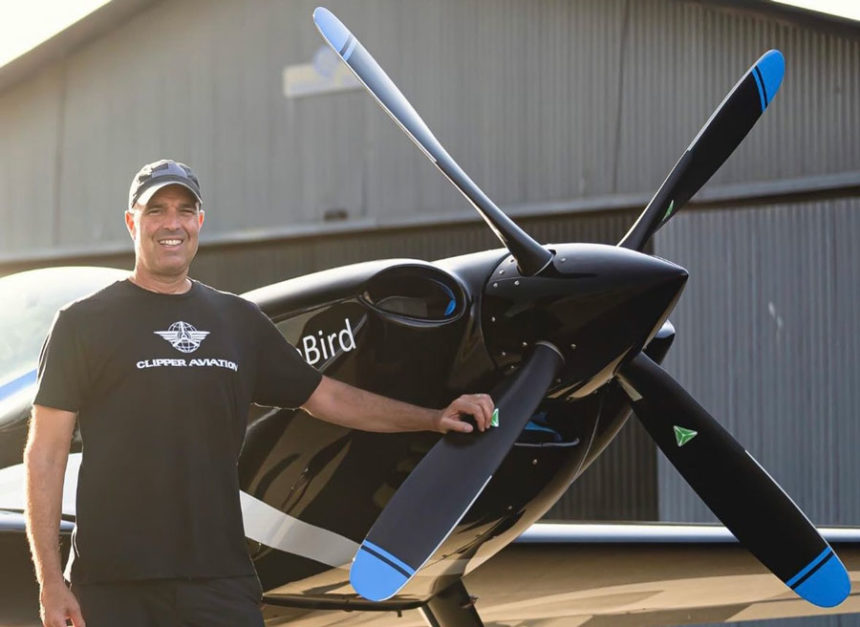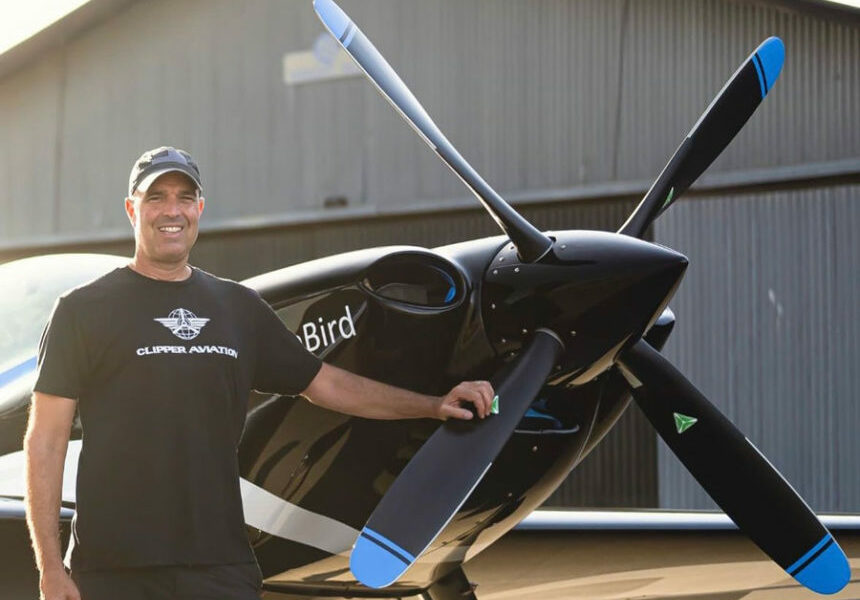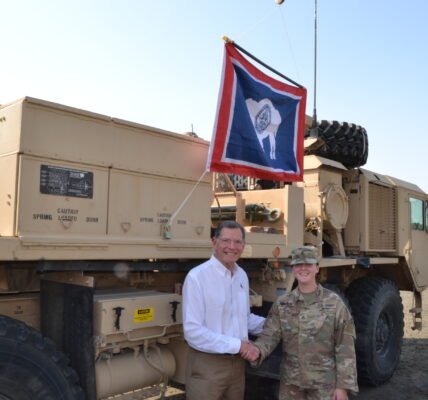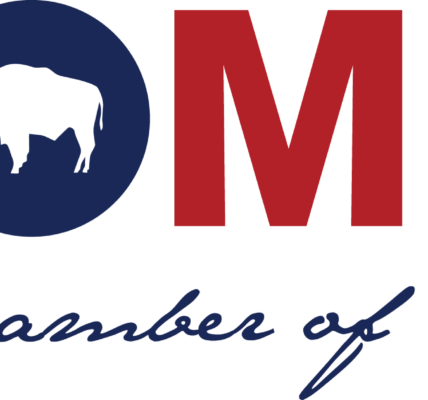
• Residents say the air traffic is noisy, uncontrolled and obscene in its opulence.
By Jeannette Boner
Jackson Hole News&Guide
Via- Wyoming News Exchange
JACKSON — At the height of Independence Day, Palisades Reservoir hummed with boats and campers reclining along the shore, some admiring hearts fashioned from the exhaust of an aerobatic pilot performing an impromptu airshow with another aircraft.
But then Edan Shalev’s Game Composites GB1 Gamebird nosedived into shallow waters.
Boats raced to aid the downed pilot.
“It was like Mad Max,” recalled Kevin Nettleton, the second boat to arrive at the crash.
The crash itself was upsetting enough, Nettleton said, but also troubling in the midst of the rescue efforts was a Black Hawk helicopter that swooped in, sending up a spray of water in its wake. With chopper blades whirring close to the water, Nettleton worried the military grade aircraft could cause more injuries.
But Nettleton wasn’t surprised to see a Black Hawk.
All manner of aircraft can be found parked at the Alpine Airpark, nestled between the banks of the manmade reservoir and Snake River Range. The residential development is marketed to aircraft owners, with private hangars next to a 5,850-foot airstrip that straddles the Wyoming and Idaho border.
The Alpine Airpark has earned a reputation over the years of unfettered growth and development, said those who spoke with the News&Guide this week. And after the crash last Thursday, community members, who have long voiced their concerns over what they say is uncontrolled air traffic growth and increased noise pollution, are sounding the alarm again.
“It’s a circus,” said Jay Goodrich, a seven-year resident of Alpine. “As a private pilot myself, watching the stuff they are doing at the airpark, I can’t believe the FAA is not down there,” he said of witnessing fighter jet fly-bys and what he describes as questionable flying by private pilots.
What was first envisioned as a fly-in residential park hosting the likes of single-engine Cessnas is now home to military-grade aircrafts, larger private jets and a lot more traffic, as pilots brag on social media about flying a short hop to Arco, Idaho, for lunch.
The rescue
But none of that was on Nettleton’s mind when he first raced to Shalev’s aid.
A professional adventure guide based in Star Valley, Nettleton was piloting a boat on the water with friends that afternoon.
When Nettleton reached the crashed plane, two of his friends leapt into the water to punch through the cockpit of the plane and pull the pilot out.
One of the men in the water was an emergency medical technician, Nettleton said. Another friend, a nurse, was on the deck of the first boat. She started lifesaving measures on Shalev after the two men pulled him from the water.
Shalev was pronounced dead at Star Valley Hospital later that evening. Lincoln County Coroner Dain Schwab said this week that Shalev’s cause of death was “severe internal trauma.”
The accident is currently under investigation by the National Transportation Safety Board and Federal Aviation Administration.
Once the adrenaline wore off, Nettleton had time to reflect on the risk created by the wind generated by the Black Hawk helicopter, which made it hard for the two men trying to help Shalev keep their heads above water.
“I know he was trying to help, but it was hell. I’m still shaken up over it,” he said. “He came out of nowhere.”
The aftermath
He’s not alone in his frustration. After the Fourth of July crash, community members who have long voiced concerns over what they say is uncontrolled air traffic growth and increased noise pollution renewed their efforts to rein in what they see as a risk to public health and safety.
The Alpine Airpark has a board of directors to enforce the homeowners’ bylaws.
The airstrip operates on a 30-year lease through the Caribou National Forest. While the airstrip can be used by the public, the board governs residents and residential visitors when it comes to who can fly in and out of the private development.
Neighbors have described the air smelling of jet fuel and worried about possible pollution to Palisades Reservoir. For Alpine resident Goodrich, the airpark has gotten out of hand.
“It’s extreme wealth versus the common man,” Goodrich said of the Airpark’s growth, which he contends has left the community out of the discussion of who gets to fly in and out. “In rural Wyoming, do we really need fighter jets taking off so they can practice? As a pilot, you want to stay sharp. When I was flying, I was flying every day of the week, but I wasn’t piloting a fighter jet. Do we need fighter jets in Alpine, Wyoming, saying they don’t have to report to anyone?”
Ultimately, pilots operating at the air field are under FAA rules.
After last week’s crash, community members sent a letter to the airpark board and Alpine Mayor Eric Green, who did not immediately send the letter to the News&Guide, wanting the airpark board to release the letter.
Raj Narayanan, president of the airpark board, sent the News&Guide his response to the complaint letter that outlined excerpts from the airpark’s guidelines and procedures manual. He did not send the News&Guide the original complaint letter.
In a follow up interview, Narayanan said that while the crash was terrible, accidents like those are outside of the scope of the airpark’s jurisdiction.
“One of the things we can do as an airpark is to be proactive and establish procedures, policies and guidelines for members that fly into the airpark or live at the airpark,” Narayanan said of what controls the board can levy. “We do have very formalized, established procedures and guidelines for members of the airpark, and we ask that all members convey those to their guests to ensure that they’re aware of standard departure corridors, arrival corridors and performance limitation requirements that we’ve established to try to be neighborly and try to be courteous to all of our residents within the community at large.”
Narayanan and airpark manager Lynn Ferguson both said that complaints over the years have been minimal from the public.
Additionally, Narayanan said because the airpark does not receive federal funding, the park is not obligated to publicly report air traffic numbers.
“We have been here for three years, and we were very aware of the airstrip,” said Matt Grant, who lives in Alpine Meadows next to the Airpark. “Little did I know that during our first Fourth of July, the house would start shaking. It sounded like a ‘Top Gun’ film. We have rules in our neighborhood that come from the Forest Service that say we are not allowed to have fences because of the wildlife. I’m sure the Forest Service didn’t intend to have fighter jets flying over. It sounds like an episode of MASH down there.”
Grant was not the first to issue a series of complaints. Other residents have asked the Forest Service to step in, contacted the FAA, showed up at town hall meetings and tried over the years to engage with the Airpark board.
“The problem with rules is that they need enforcement,” Grant said. “We’re the red-headed stepchild of this valley. We are a bedroom community for Jackson, and resources are spent in Afton. This is the Wild West in Alpine, and without spending money on a lawyer, there is no way (for community members) to enforce rules at the airpark. There is no tower; they are only communicating by radio. The town hasn’t pushed this. They are more concerned about increasing (city) taxes than the airpark.”
Narayanan agreed in his response letter that the Fourth of July can be a little loud. He told the News&Guide that this time of year was the busiest at the airpark next to Christmas.
But residents disagree, saying that the airpark is busy all of the time and not just in July.
“I’ve lived here for seven years, and we love Alpine,” Heather Goodrich said. “But since the pandemic, the type of plane being flown has changed. And the way they fly is with disregard to anyone living in Alpine, with the touch-and-gos and circling over and over. There have been multiple crashes, and we’re just afraid. There is no oversight, and we don’t know what the pilots’ skill sets are or if there is anything in their system that shouldn’t be.”
Grant sent a variety of videos to the FAA of low-flying planes. The FAA, he said, required tail numbers to investigate complaints. Grant and Goodrich both said that they could not see the tail numbers on the planes, and their complaints were shelved.
The FAA field office in Casper that handled the complaints declined to publicly comment.
Looking ahead
Alpine Mayor Eric Green said on Tuesday that Narayanan reached out to him after the complaint letter was received. Green is meeting with members of the airpark board on Wednesday in what the mayor hopes will be a productive conversation on how the park and the community can better communicate and live together.
“What I would say is, the airpark is definitely part of the Alpine ecosystem, but it’s not in the town of Alpine,” Green said. “As mayor and town council, we have very little jurisdiction over what happens at the airpark. Part of the problem is that there are a few people who don’t abide by the rules, and that’s what causes the consternation.”
Narayanan is looking forward to opening better lines of communication with the community and floated the idea of forming a citizen committee that could act as liaisons to the airpark. He said the airpark is looking at a new system by which community members can better access the airpark to issue concerns or complaints.





